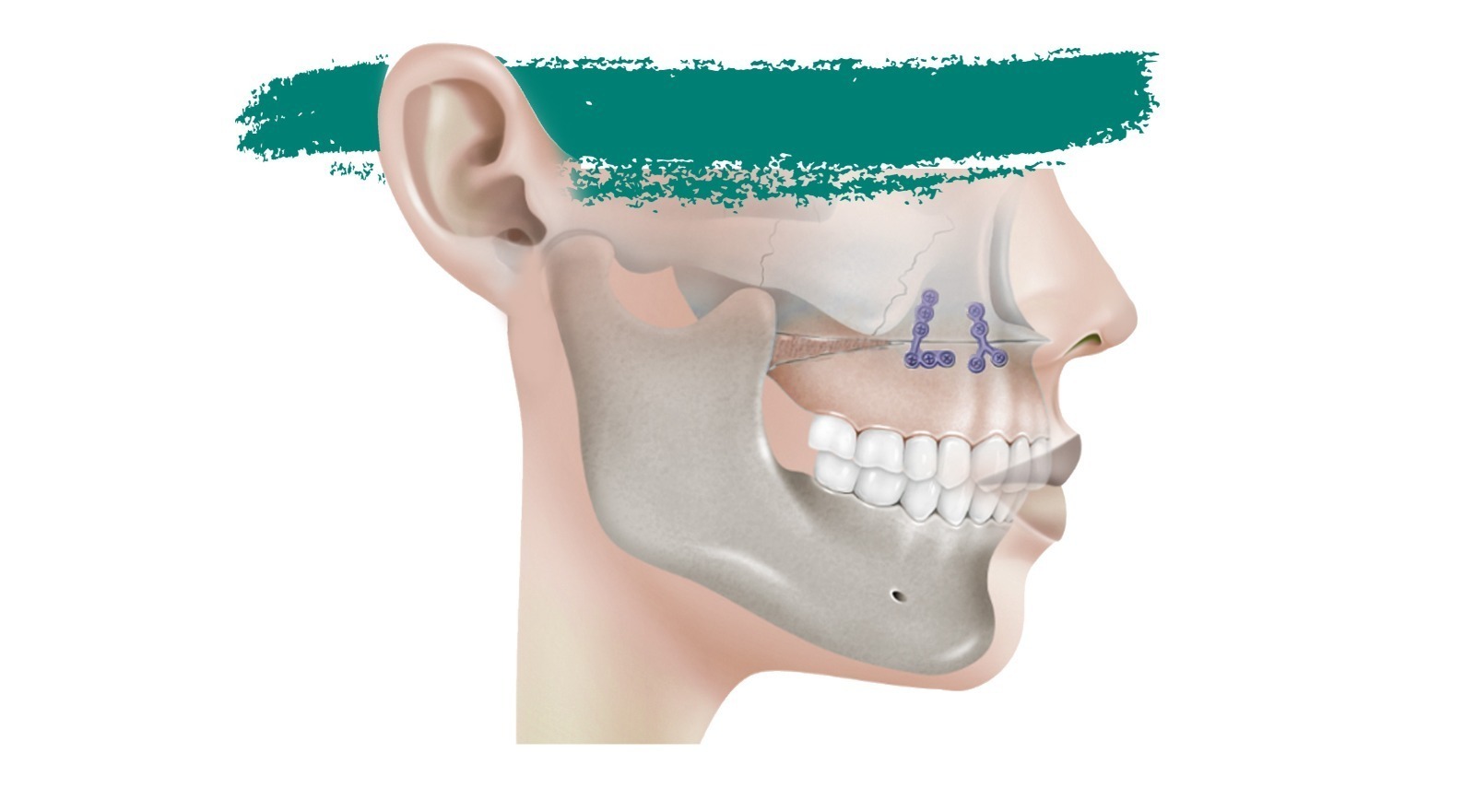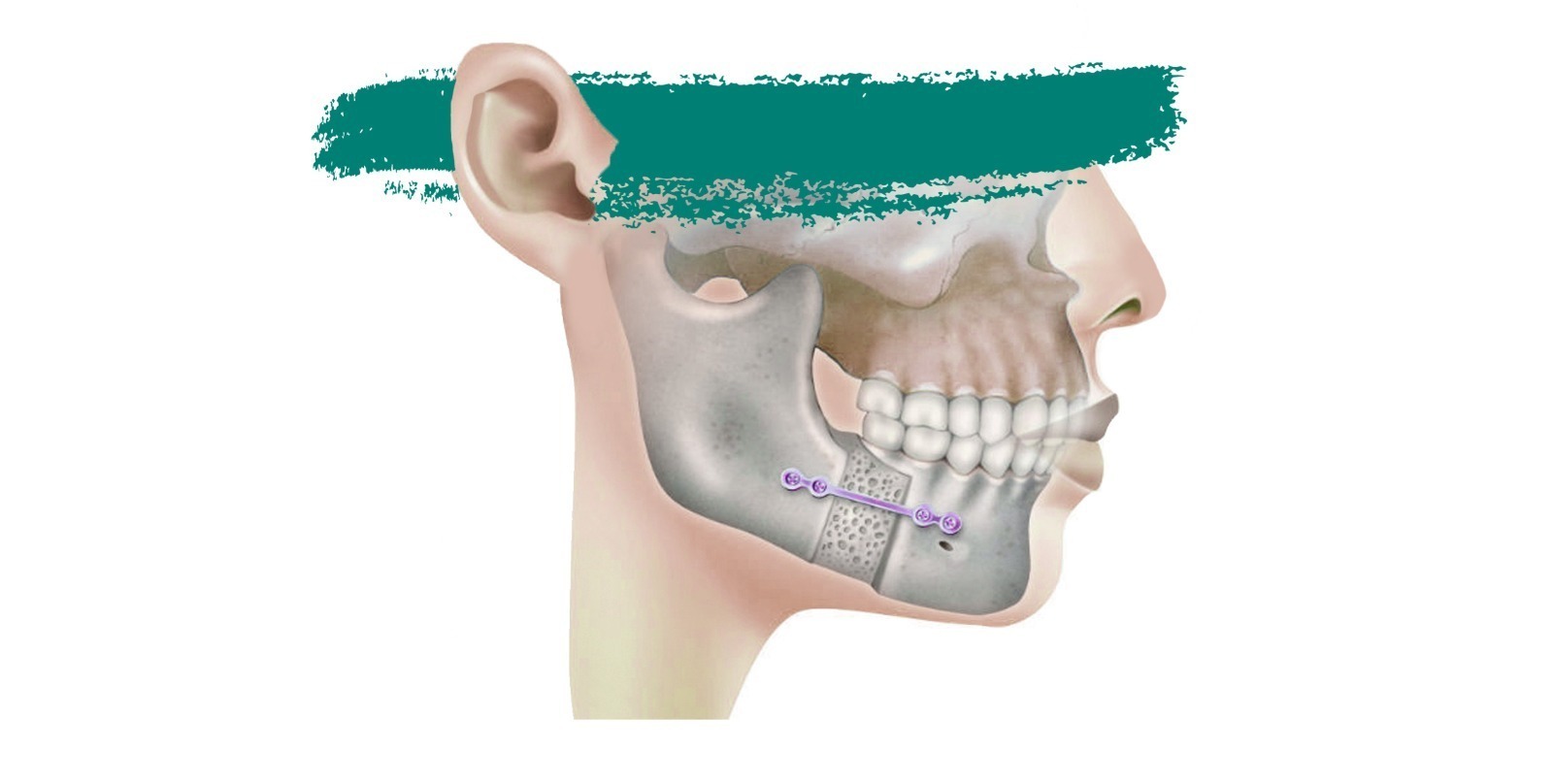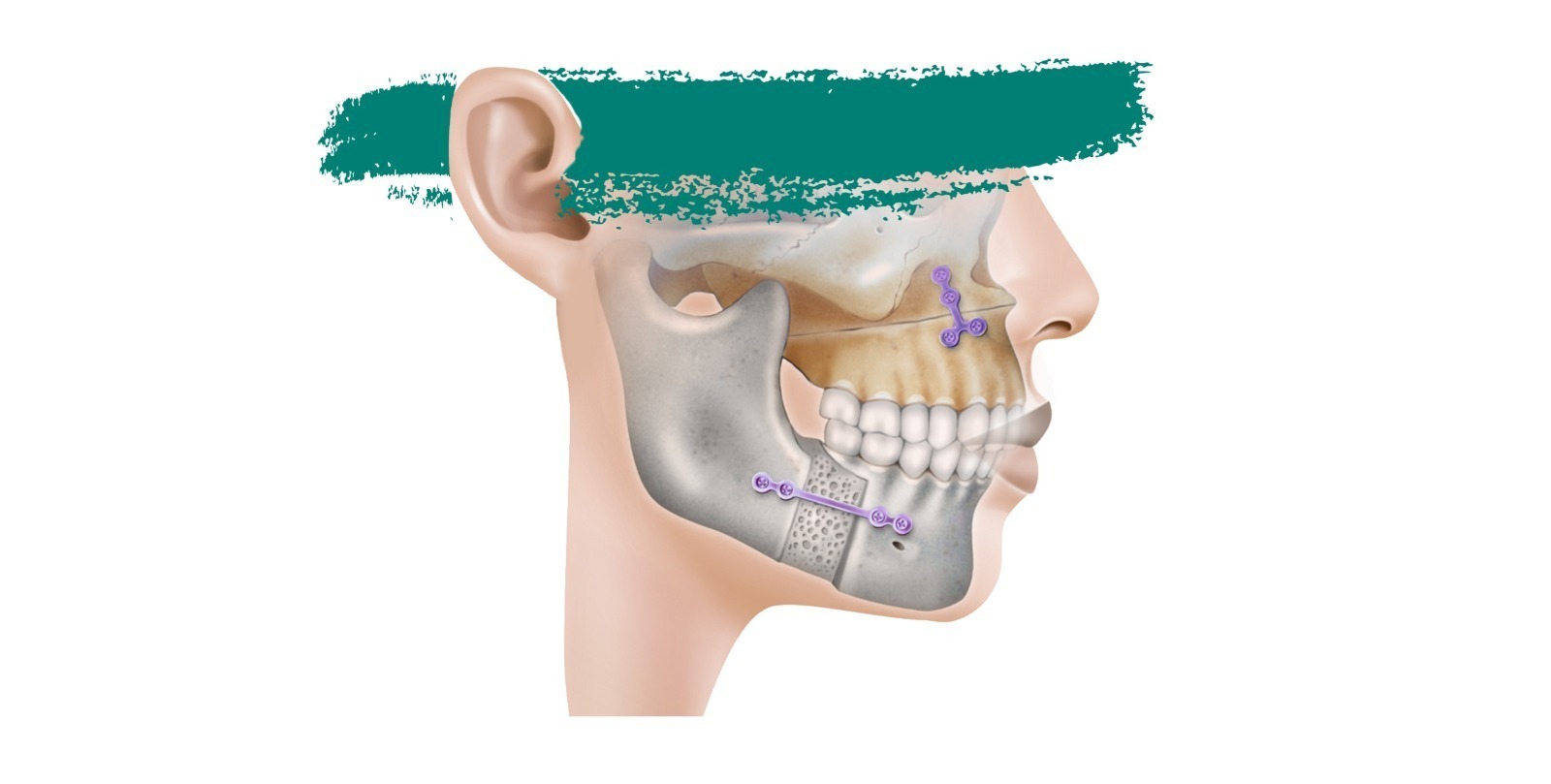






Single-maxillary surgery on the upper jaw: for this reason, the osteotomy is performed at the level of the maxillary bone, which is repositioned and fixed with plates and screws. It should be remembered that the incisions are all inside the mouth and will be completely invisible after the operation. This procedure is performed to correct some facial deformities, like Class III or Class II with maxillary retrusion, open bite or gingival smile.

Single-maxillary surgery on the upper jaw: for this reason, the osteotomy is performed at the level of the maxillary bone, which is repositioned and fixed with plates and screws. It should be remembered that the incisions are all inside the mouth and will be completely invisible after the operation. This procedure is performed to correct some facial deformities, like Class III or Class II with maxillary retrusion, open bite or gingival smile.

Single-maxillary surgery on the mandible:: the operation, aimed at returning the mandible to its ideal anatomical position with respect to the upper jaw, is performed with two small incisions inside the mouth in correspondence with which the osteotomies are made, by allowing the repositioning the mandibular segment and fixing it with titanium plates and screws. This type of intervention restores the harmony of the lower facial part and it is also used in the presence of facial asymmetry and in obstructive sleep apnea.
Single-maxillary surgery on the mandible:the operation, aimed at returning the mandible to its ideal anatomical position with respect to the upper jaw, is performed with two small incisions inside the mouth in correspondence with which osteotomies are made, which allow the mandibular segment to be repositioned and fixed with titanium plates and screws. This type of intervention restores the harmony of the lower part of the face and is also used in the presence of facial asymmetry and in obstructive sleep apnoea.


It is performed when it is necessary to reposition both jaws (mandible and upper jaw) in the correct anatomical position through osteotomies, in order to obtain correct occlusion and aesthetic harmony. Fixation with plates and screws allows the patient to have optimal occlusion and significantly improve the facial profile.

It is performed when it is necessary to reposition both jaws (mandible and upper jaw) in the correct anatomical position through osteotomies, in order to obtain correct occlusion and aesthetic harmony. Fixation with plates and screws allows the patient to have optimal occlusion and significantly improve the facial profile.

Il Dott. Daniele Panetta e il suo team lavorano con professionalità e passione per offrire soluzioni personalizzate per esaltare l’armonia del tuo volto.